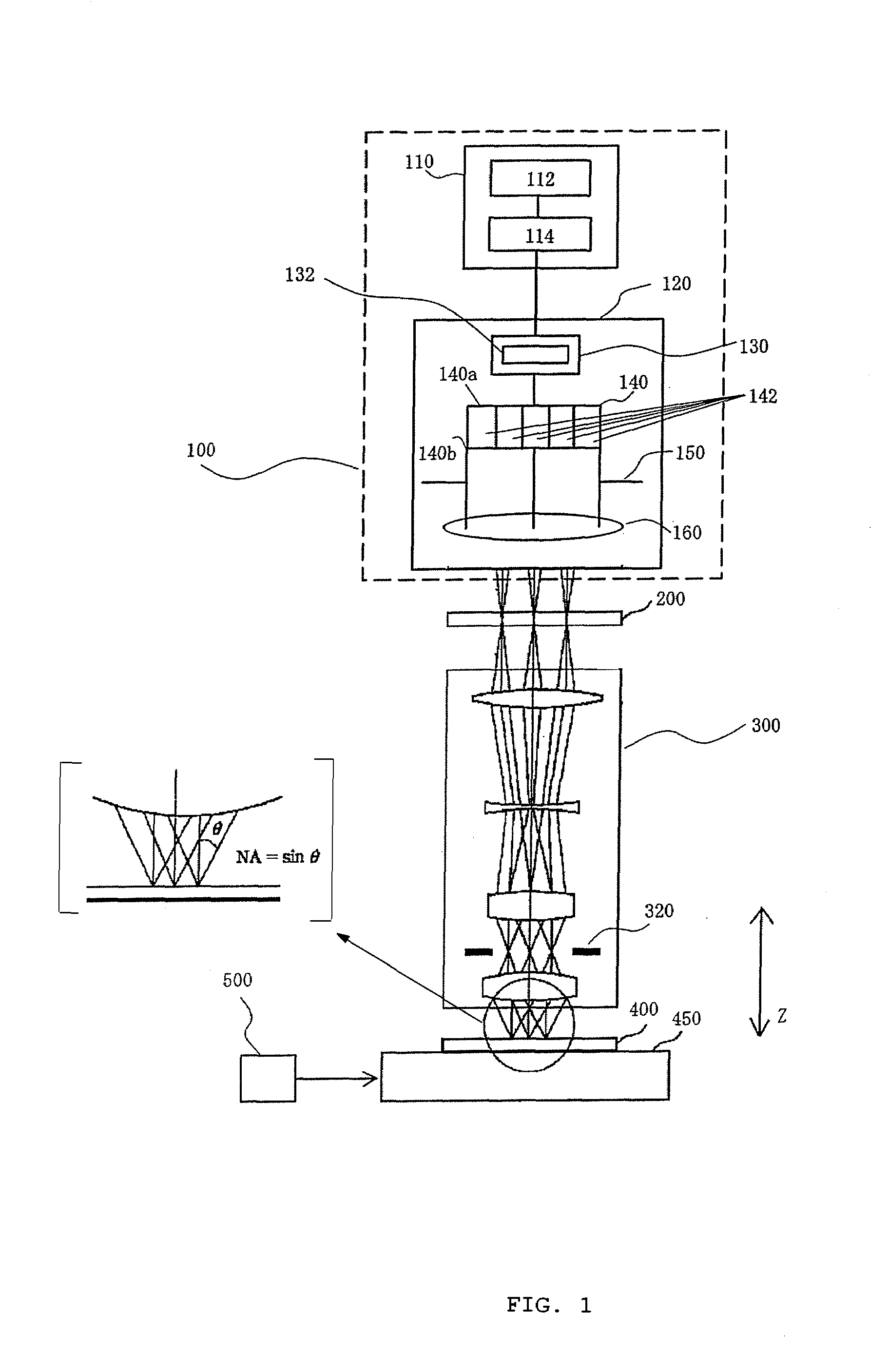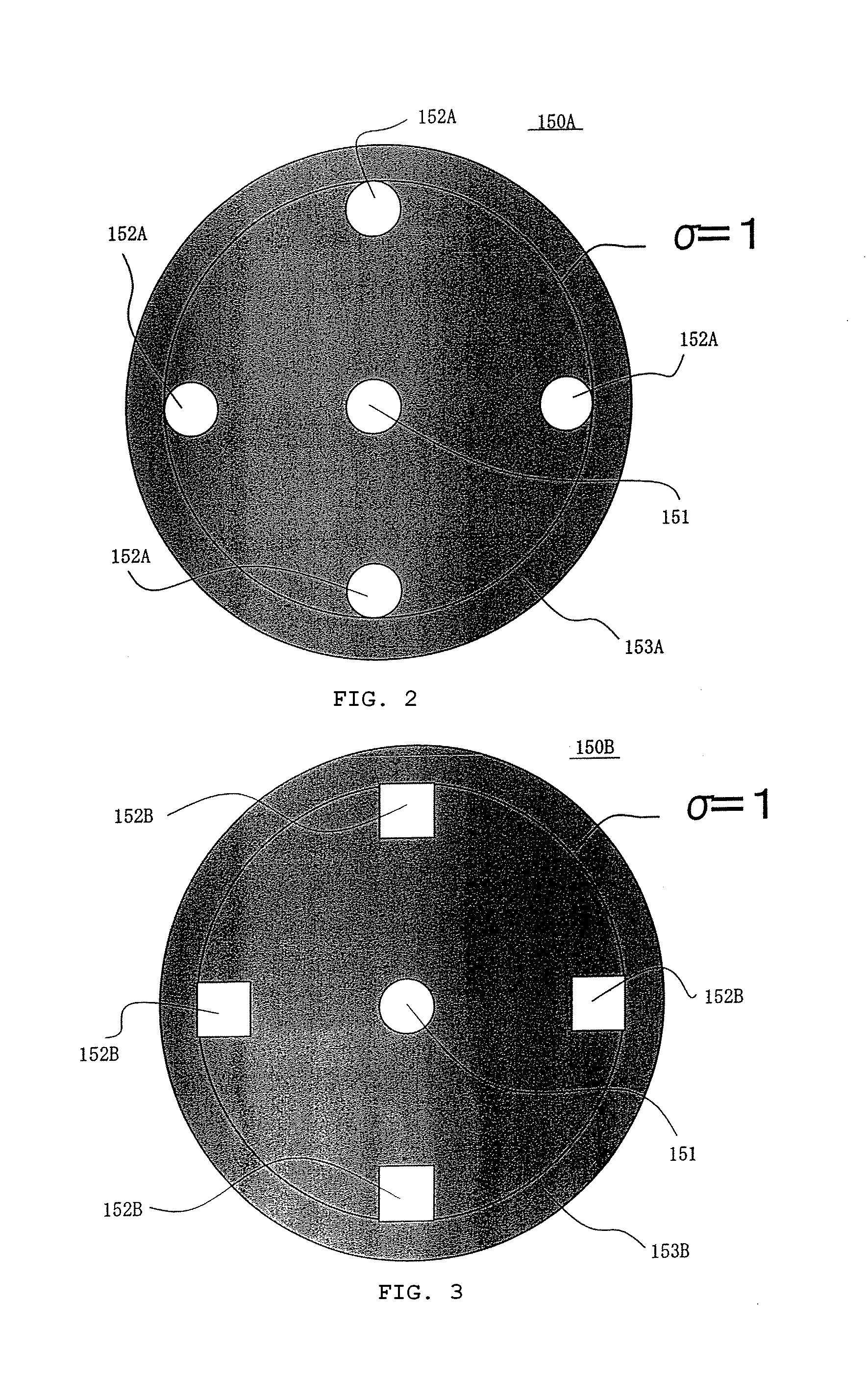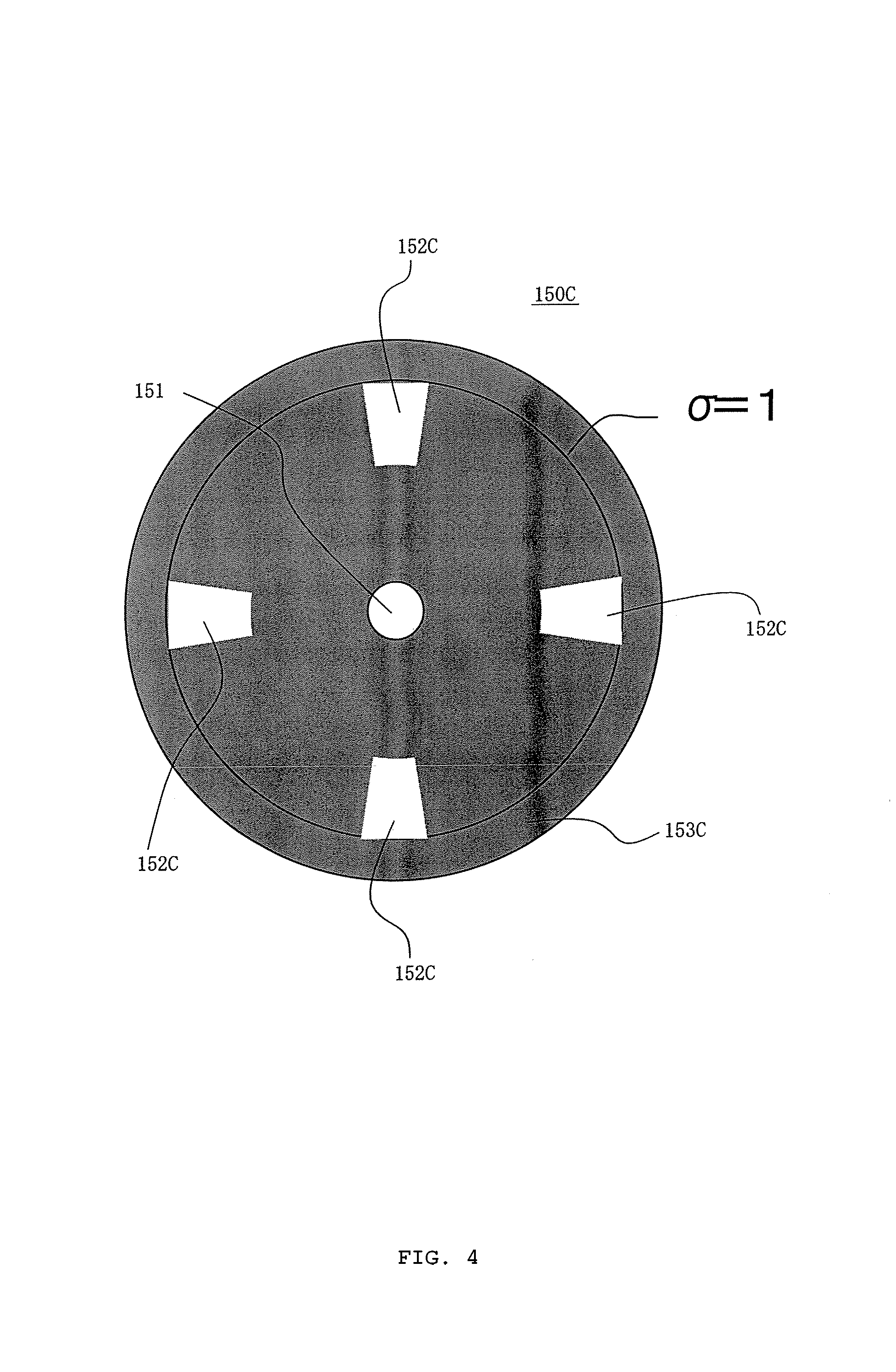Exposure method and apparatus
- Summary
- Abstract
- Description
- Claims
- Application Information
AI Technical Summary
Benefits of technology
Problems solved by technology
Method used
Image
Examples
example 1
[0154]The example 1 uses the binary mask 200 shown in FIG. 8, KrF excimer (with a wavelength of 248 nm) as the laser 112 and the projection optical system of NA=0.60 for the exposure apparatus. The mask 200 sets a hole diameter of the desired contact holes 210 to be 150 nm, which is larger than a hole diameter of the dummy contact holes 220 by only 30 nm. The aperture stop 150 uses the aperture stop 150A shown in FIG. 2 while setting σ of the illumination light having its peak near the optical axis (in other words, brought about by the circle 151) to be 0.2 and σ of the illumination light having its peak off the axis (in other words, brought about by four circles 152A) to be 0.9. The intensity ratio between small σ illumination light and large σ illumination light is set to be 0.9 to 1 by the exposure-amount regulator 132.
[0155]The exposure result at this time is shown in FIG. 11. The figure shows the image-forming characteristics when the image-forming position adjuster 500 moves, ...
example 2
[0156]The embodiment 2 uses the phase shift mask 200A shown in FIG. 9. In other respects (in other words, the structure of the exposure apparatus, illumination conditions, exposure amount, etc.), the same conditions were used as that in the example 1. The result at this time is shown in FIG. 13. It will be understood that a number of improvements have been made compared with the binary mask 200.
example 3
[0157]The example 3 is the same as the example 1 or 2 except that the mask 200B shown in FIG. 10 was used. This example makes a hole diameter of dummy contact holes 260 adjacent to desired contact holes 210, smaller by about 20 nm (therefore, about 100 nm) than that of other dummy contact holes 230. Control over the intensity of dummy patterns between the desired patterns of contact holes 210 improves the exposure amount. It is fairly effective to the improvement of the image-forming performance to automatically reduce the hole diameter of a dummy contact hole 260 adjacent to a desired contact hole 210, but the optimization may depend upon the number of adjacent holes and the distance in-between.
PUM
 Login to View More
Login to View More Abstract
Description
Claims
Application Information
 Login to View More
Login to View More - R&D
- Intellectual Property
- Life Sciences
- Materials
- Tech Scout
- Unparalleled Data Quality
- Higher Quality Content
- 60% Fewer Hallucinations
Browse by: Latest US Patents, China's latest patents, Technical Efficacy Thesaurus, Application Domain, Technology Topic, Popular Technical Reports.
© 2025 PatSnap. All rights reserved.Legal|Privacy policy|Modern Slavery Act Transparency Statement|Sitemap|About US| Contact US: help@patsnap.com



